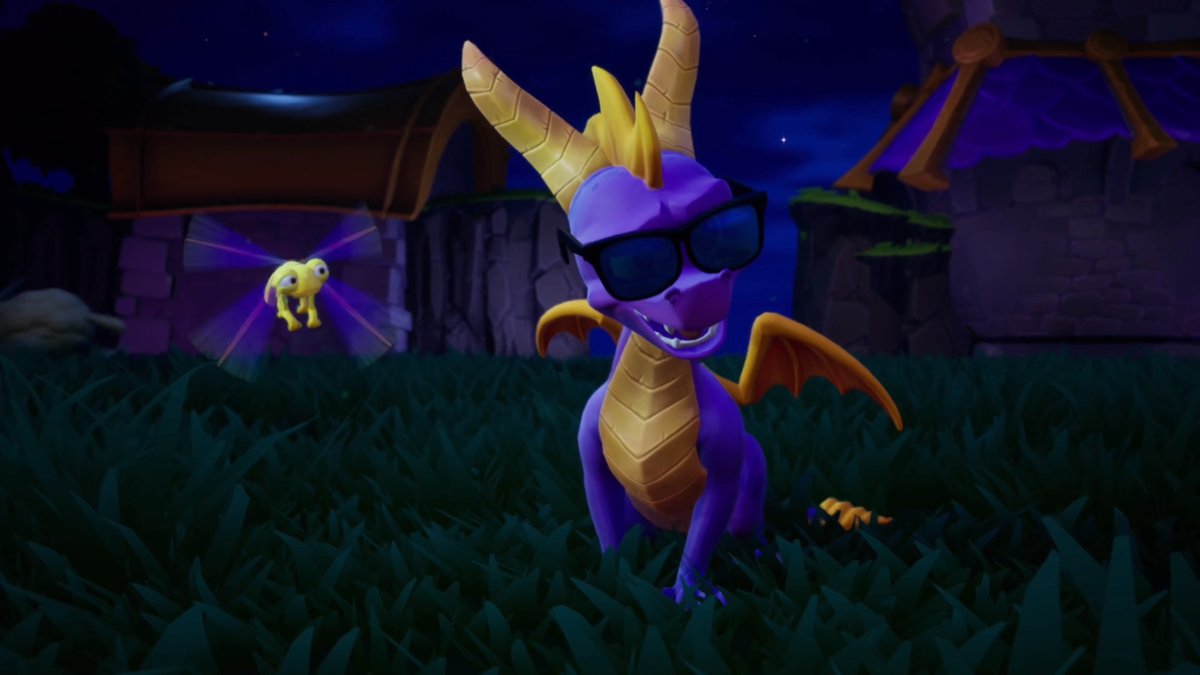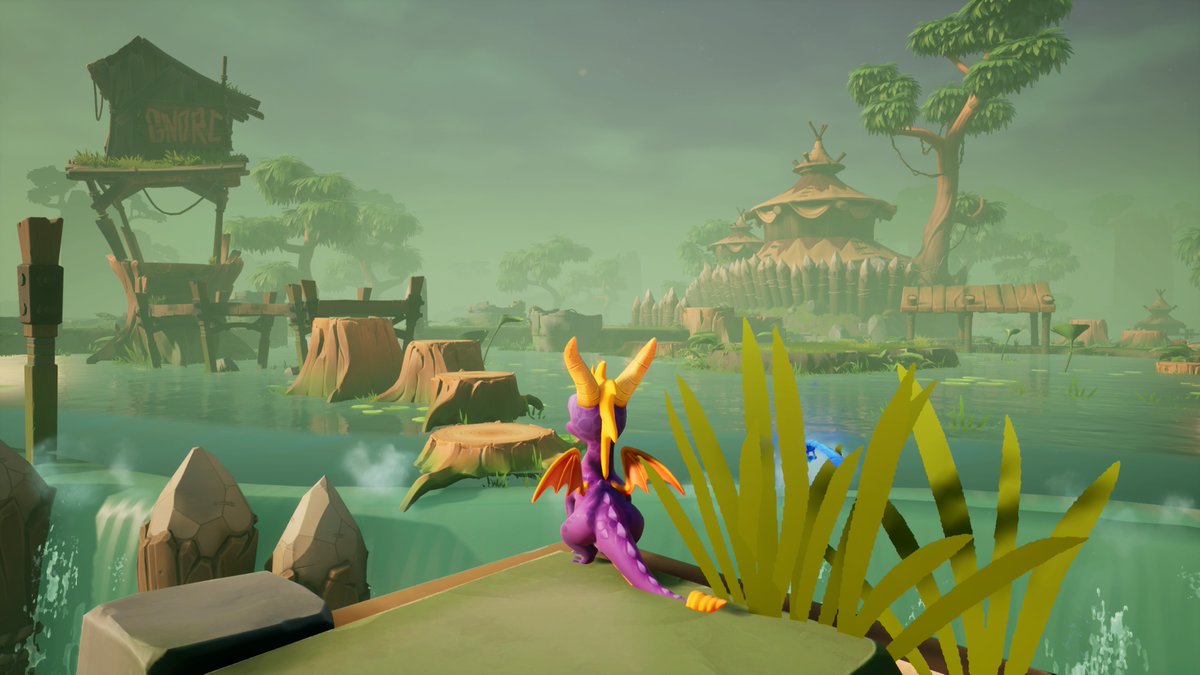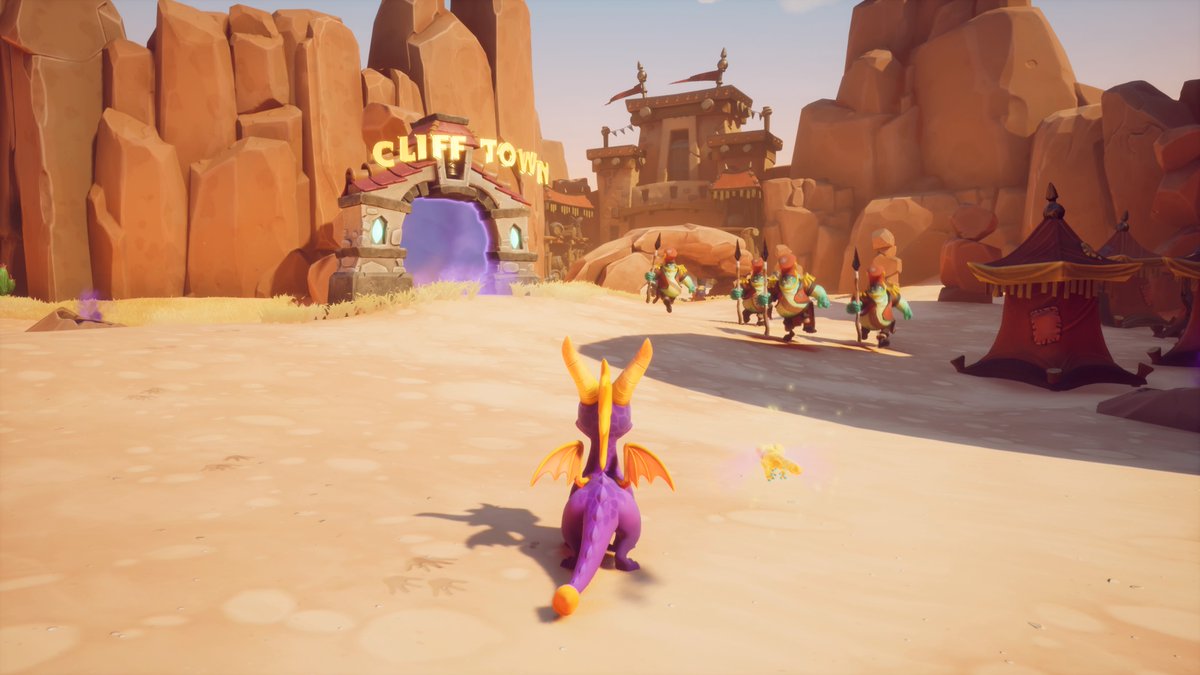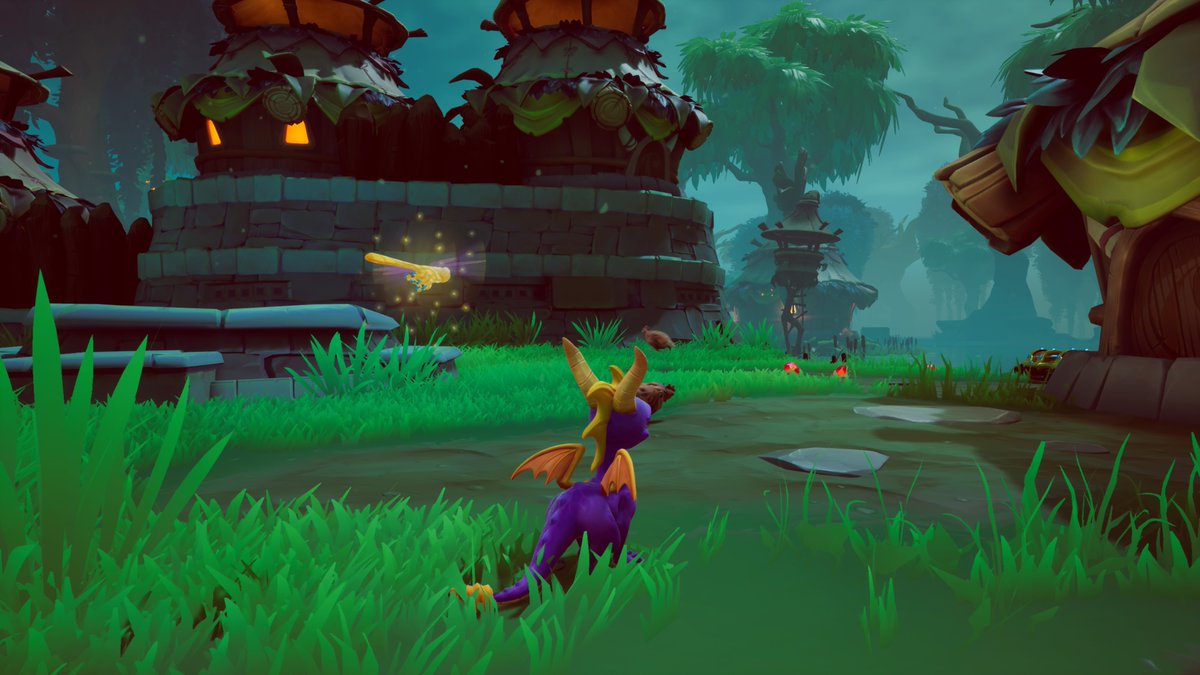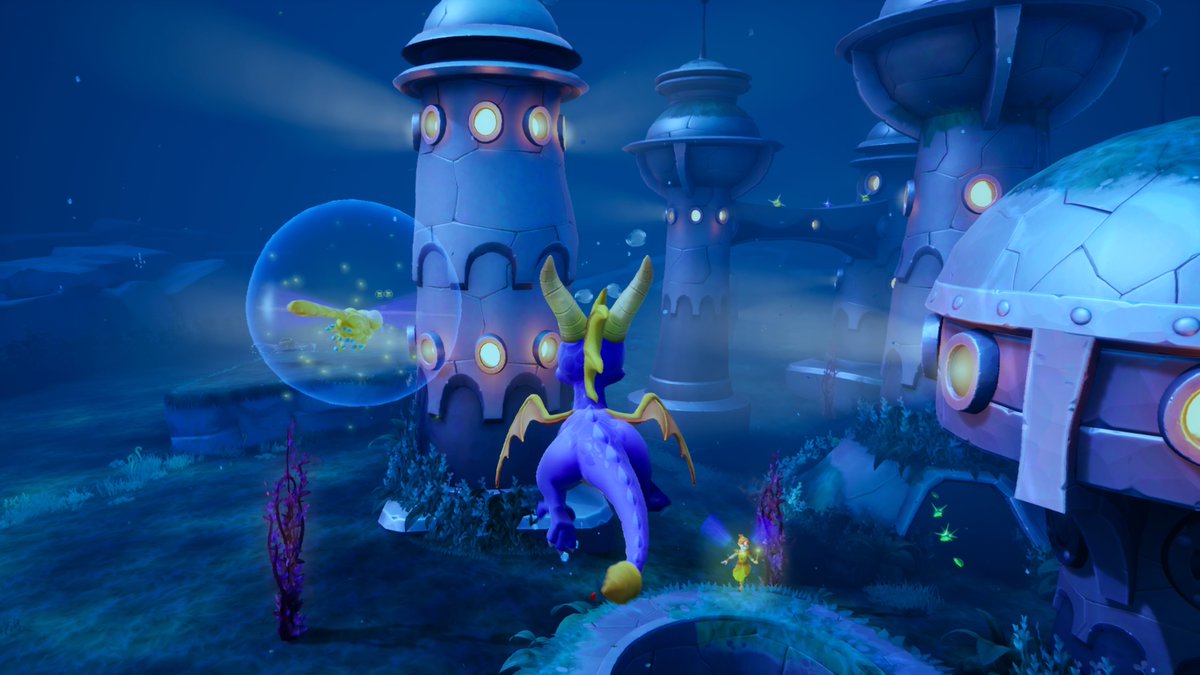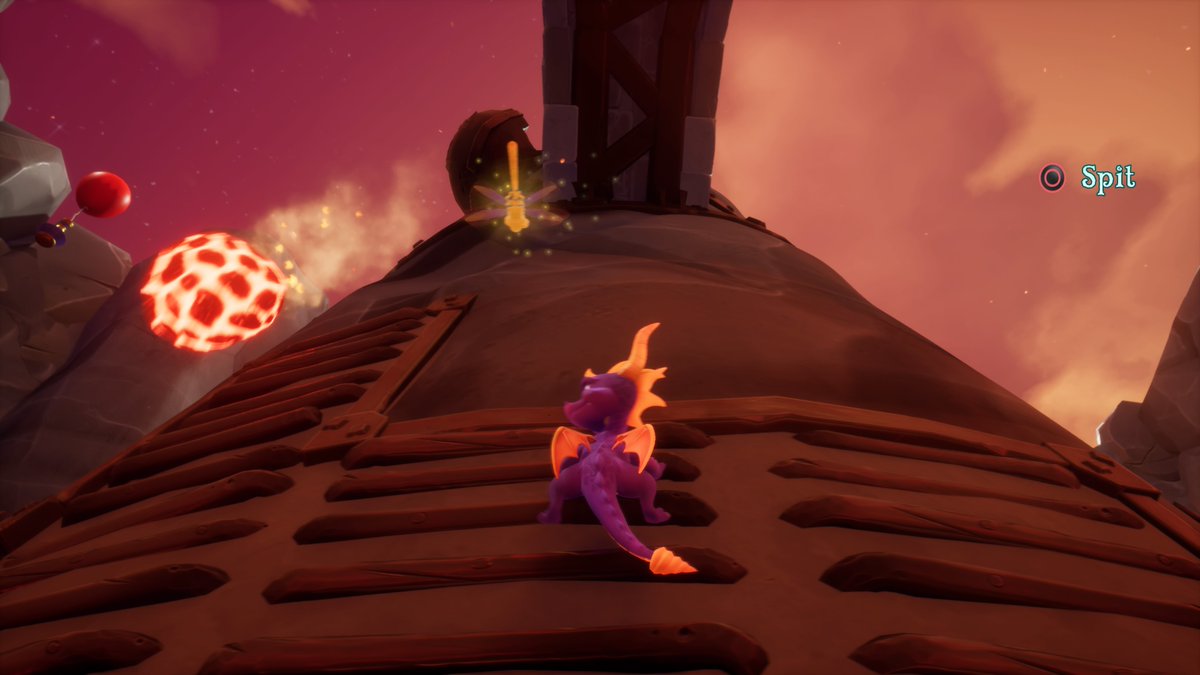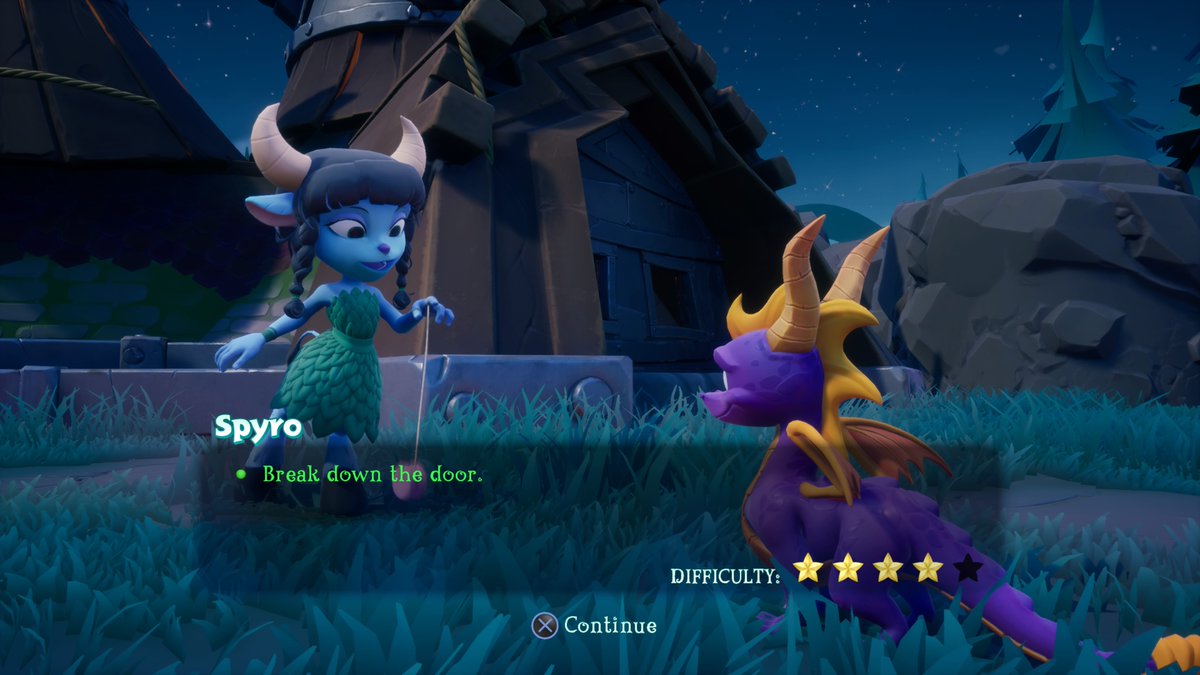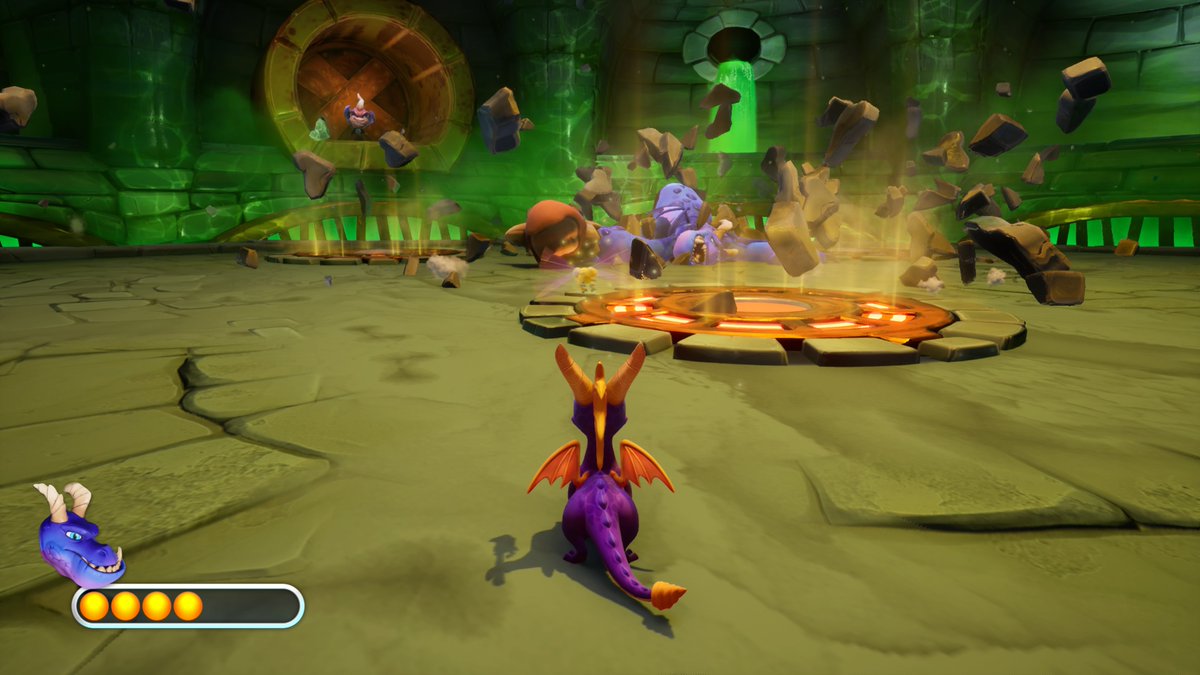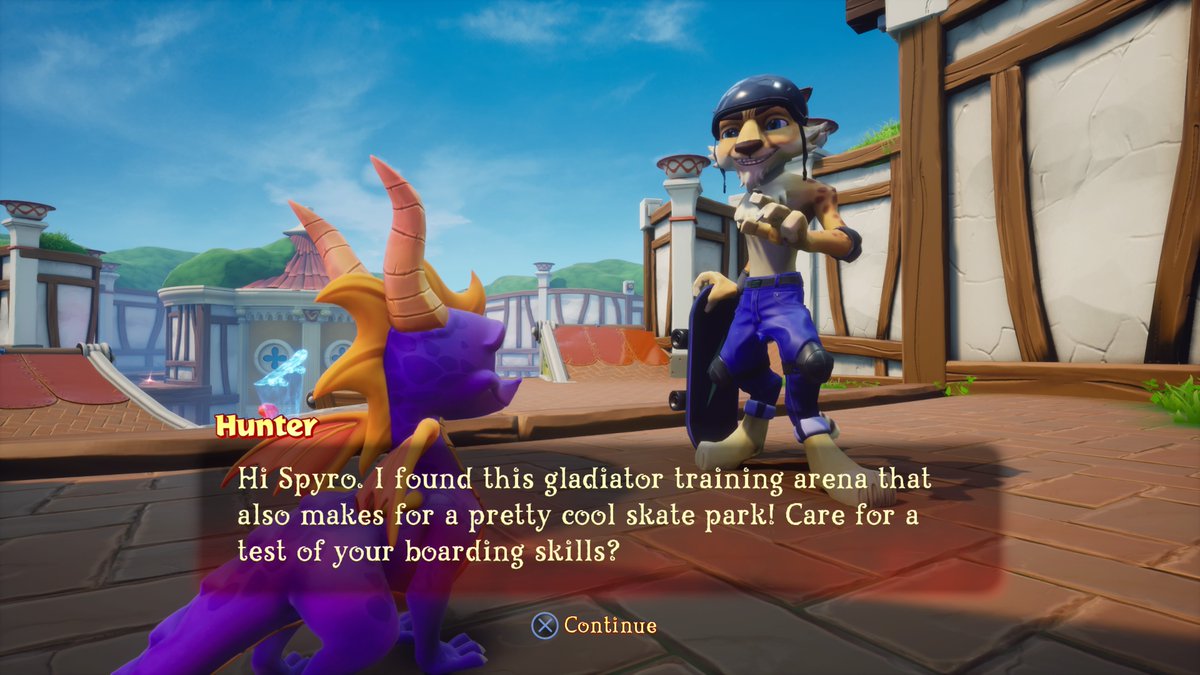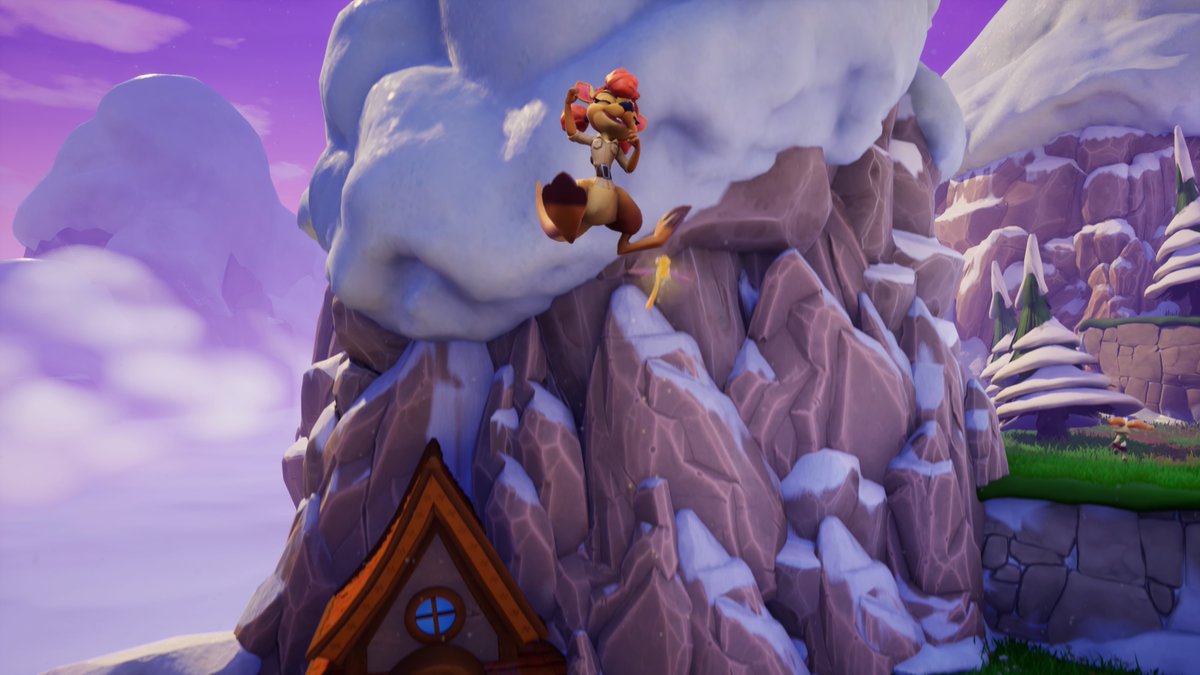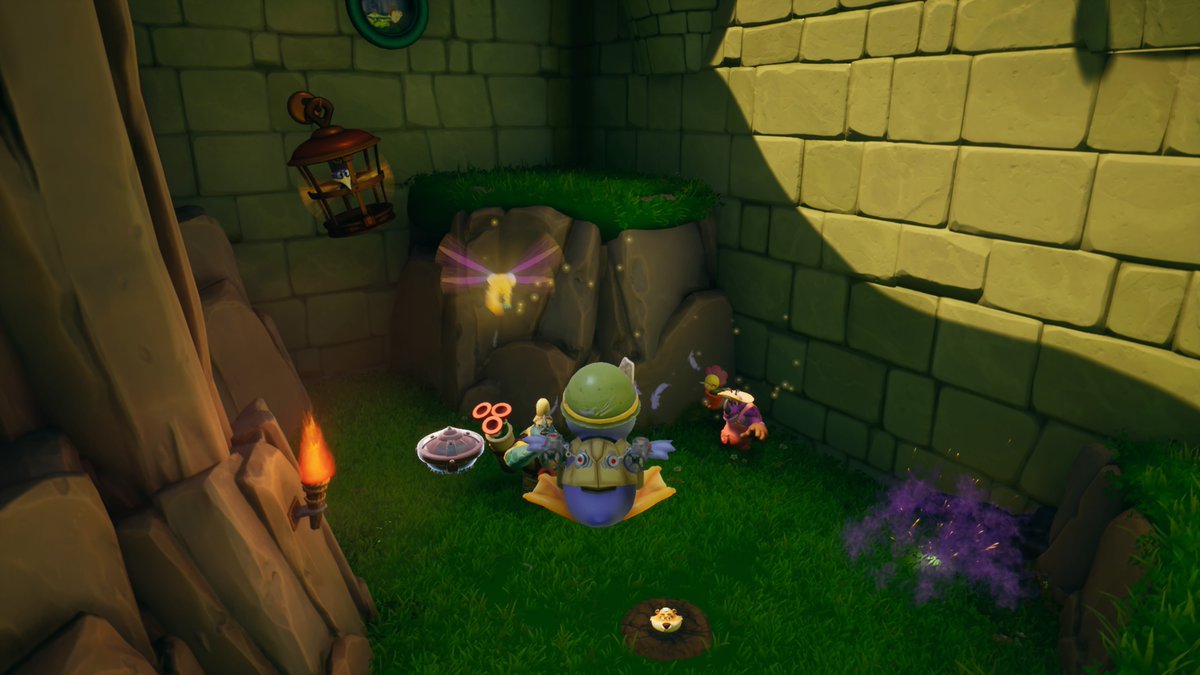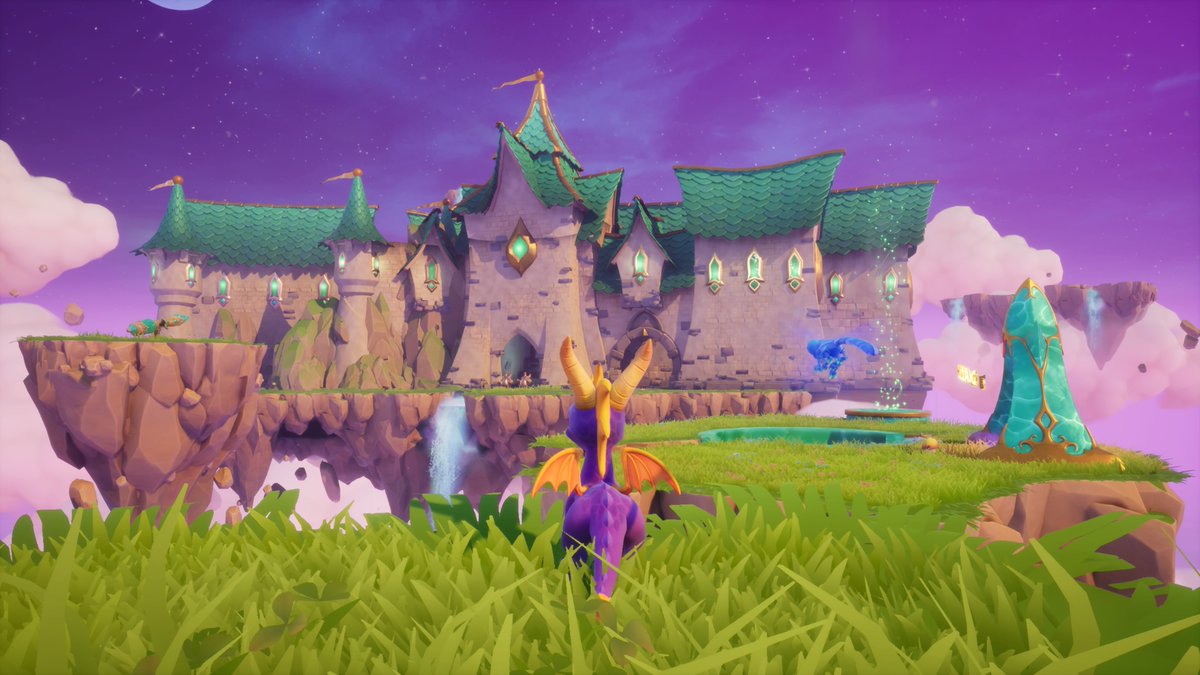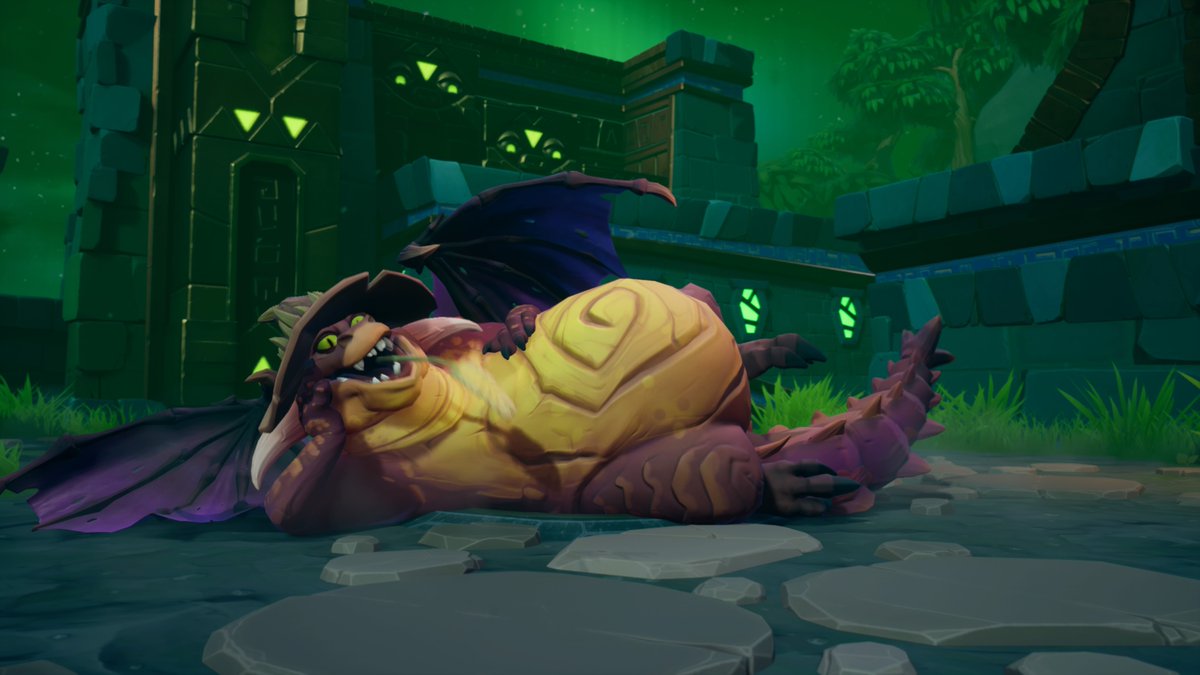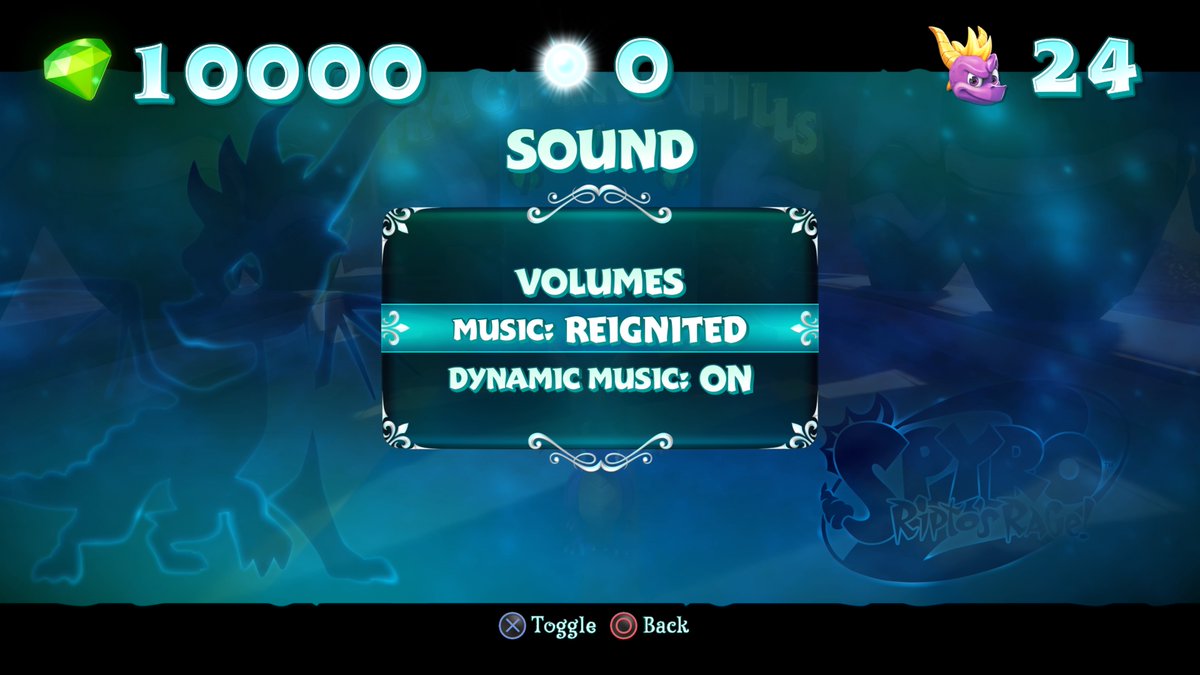The iconic purple dragon and his original series from the PlayStation 1 era makes a triumphant return to the modern-aged gaming world. Spyro’s classic trilogy translates beautifully onto current-gen consoles, fully utilizing the benefits of enhanced visuals that are now possible. And as someone who grew up playing Insomniac Games’ original trilogy, I think that Spyro Reignited’s development team over at Toys for Bobs deserve a well-earned vacation at Dragon Shores’ amusement park.
Game Name: Spyro Reignited Trilogy
Platform(s): PlayStation 4 and Xbox One
Publisher(s): Activision
Developer(s): Toys for Bobs
Release Date: 11/13/2018
Price: $39.99 (USD)
The Spyro Reignited trilogy is a gorgeous reenvisioning of the original titles; this remade collection is a prime example of an “ugly duckling” transformation. All three games deliver stunning visuals, adding further charm across every title. A fine pair of nostalgia glasses isn’t even necessary here to admire the scenery presented by these games. And the best part about the eye-candy presentation?… Fine-tuned gameplay that stands the test of time accompanying such picturesque scenery. Controlling Spyro is surprisingly fluid, crisp and responsive controls make all the games feel amazing to play, which pleasantly surprised me. Age is certainly not a factor in Spyro’s case.
Because there are three games to cover within Spyro Reignited, I thought it right to properly evaluate what each title has to offer players in regards to a gameplay experience. I assume Spyro Reignited will not only appeal to those of us both nostalgic and familiar to the series, but also newcomers. Either people who missed out on the original trilogy or possibly a brand new generation of players being exposed to Spyro for the very first time. So, without further ado…
Spyro the Dragon Gameplay:
The first game feels like a smooth ride through raw, uninterrupted gameplay. The experience offered is one that is utterly pure; the game drops you in and releases the reigns on the player immediately after the opening cinematic concludes. There are no real forms of tutorials here, but any player can easily determine the simple controls with a brief stint of experimenting. Spyro’s mobility includes jumping, gliding, and charging (doubling as an attack); for dealing with baddies, breathing fire and charging with your horns will finely suffice. Overall, Spyro’s actions feel responsive and fun, making for a grand ol’ time.
The levels (or realms) are gracefully simplistic within Spyro, they’re short and sweet, yet satisfying enough for a player to have their just fill. There’s an interesting level design philosophy that I felt is particularly noteworthy. Your exits for each realm can usually be reached within mere minutes, which seemingly takes away the focus from simply traveling from one point to another… And redirects that focus by emphasizing exploration and discovery.
The levels themselves are accessed via portals located within engaging hub worlds that also happen to function as their very own stage, brimming with collectible treasure and enemies galore. Each level presented to the player holds their own set of distinct characteristics that make every realm feel like something different. From enemy designs dressed to suit the level’s occasion to a varied visual palette of vistas and terrain. Every realm feels as unique as a snowflake, though perhaps without the complex intricacies of one.
Spyro the Dragon certainly has the elements of a fully-fledged collectathon, but the way in which the games handles the act of collecting is tactful and actually gratifying. As you explore a realm and reach the exit point, shortcuts will become available to Spyro; these shortcuts are perfect for backtracking without hassle.
Some stages even have looping pathways from beginning to end and vice versa because of these shortcuts. There’s even a mechanic built into your trusty dragonfly that pinpoints and triangulates missing gems. All of this results in a relaxing venture to gather up collectibles, instead of being a boring and tedious treasure hunt.
They only downsides I can muster thinking up within the first game are the pitifully easy “bosses”, which act more like cannon fodder for Spyro to torch. Honestly, I doubt you have to flex a single neuron to come out victorious against them, including the disappointing final boss. Which I sadly couldn’t defeat as a child…
Spyro 2: Ripto’s Rage Gameplay:
Our second title within the trilogy introduces a set of new abilities and new gameplay mechanics for Spyro to play around with. The problem, however, is a somewhat weak implementation of said additions; these debut features feel sadly underutilized. Spyro can now swim and explore underwater, climb ladders, and perform a practically useless aerial head bash maneuver (it looks cool though).
See, the situations that are presented to players very rarely utilize Spyro’s new toolset in fun or interesting ways. There are indeed scenarios that make proper use of climbing or swimming, but they’re shortlived and just don’t appear often enough. And it isn’t just the gameplay that can feel shallowly explored or poorly implemented.
A motley crew of NPCs now inhabit all of the realms within Ripto’s Rage; they’ll give Spyro the lowdown on their worlds’ current predicament, for the players to then set out and resolve. These interactions with the locals are a pleasant addition for the most part, though I think the flow of gameplay suffers at times because of the NPCs.
Certain levels are plagued by speed bumps due to level progression being halted by the need to lend a helping hand for an NPC. And as opposed to the first Spyro’s pace of gameplay, mingling can feel like unwanted conversations with strangers I don’t really care about. I do actually like some of the NPCs encountered throughout the game, some have really cute and charming designs, but I just don’t like the tradeoff of pacing for better world building.
Another new feature which the locals of Avalar happen to offer is the inclusion of sub-objectives or mini-games. These sub-objectives can be hit and miss, though never abhorrently bad. Refreshing when well-executed like playing a quick game of ice hockey, and disappointing like when flying through a series of rings for the third time.
At least you’ll be rewarded with a valued collectible regardless. Again, the recurring issue here is a lack of gameplay device being properly fleshed out. Which isn’t the case for everything within Spyro 2: Ripto’s Rage.
Boss battles within the first Spyro were essentially brain-dead fights with glorified enemies, but in Ripto’s Rage? We’ve got traditional bosses complete with the works; health bars, varied move sets, arena settings, and some slight resemblance to a threatening challenge. Boss battles within the sequel took a ginormous leap forward and are far more satisfying than the previous game’s take on “bosses”.
To summarize, the new features are great concepts but are sullied by missed opportunities and underutilization. The levels can have an awkward pacing due to character interactions and a few lackluster sub-objectives, but the core gameplay still maintains its solid basis. And bosses now function as legitimate boss fights.
Spyro: Year of the Dragon Gameplay:
The final game amongst the trilogy retains the new additions that Spyro 2: Ripto’s Rage introduced, but executes them with a whole lot more finesse. All of the learned abilities from the second game are now readily available from the get-go. NPC interactions and sub-objectives gel better with the core gameplay more so than they did in the second title. Plus, the sub-objectives feature a diverse set of mini-games this time around, such as skateboarding. Which has our purple dragon busting out some gnarly moves that only a quadruped with wings could pull off.
Spyro isn’t the only playable character this time around, in fact, there are four other colorful cast members to play as. These additional characters add some zesty flavoring to the classic formula of Spyro and make for a nice change of pace now and again.
Each character brings something new to the table; Sheila the kangaroo has stages designed around her incredibly high jumps, while Sgt. James Byrd (military outfitted penguin) focuses on aerial mobility and combat within his stages. The levels pertaining to all of the newcomers are pretty fun, but there are definitely a few less than stellar ones too.
Spyro: Year of the Dragon is a fine mix between the Spyro the Dragon game and its sequel, Spyro 2: Ripto’s Rage. Everything that was a bit mediocre or average from two has been refined, including NPC interactions, sub-objectives/mini-games, and level fluidity. For me, this game felt like it possessed the gameplay flow of one, while still retaining the more involved levels of the second game.
Graphics:
Spyro Reignited comes off like a Pixar film turned functioning video game; it’s beautiful, it’s clean, and it’s undoubtedly aesthetically pleasing. Every world across all three games is portrayed with such vibrancy and life due to the high-quality artistry, that you’d have to be looking away from the screen not to admire the scenery. Just take a single moment to idle in-game at the beginning of a level and take in the sights, you’ll see what I mean.
Characters and enemies aren’t just here for the gameplay’s sake either; they’re lookers in their own right too. Whether that be the huge number of redesigns for every dragon from the first game or the various enemy designs that span the pool of baddies across all three titles. The character models coupled with smooth animations add to the gluttonous visual feast for the eyes. Spyro Reignited’s graphics and presentation will most likely force your poor optics into a food coma with all the eye-candy strewn about each level.
Sound Design:
Spyro Reignited features a toggleable option for its soundtrack, where both the original composition of the ost and the remastered iteration can be selected from the pause menu at any given time. Here’s an interesting fact for yah, the drummer for “The Police” and musical composer Stewart Copeland, produced the original soundtracks for all three titles of Spyro games. His musical touch and oversight consequently produced a unique set of tracks that are somehow different from the soundtracks of many other video games. I’m not quite sure how to properly explain the sound, but the music just does something to stand out in the vast lineage of video game music. I do know, that the music accompanying stages is suitably atmospheric and captures any level’s theme or tone very well.
The general sound design and its audio caused my nostalgia to flare up on multiple occasions. The Spyro trilogy has what I would describe as a distinct, video-gamey library of sounds and noises. Collecting gems and breathing fire are given playful vitality by the lighthearted audio pieces. Even Spyro’s adorable trot is reinforced with a fun, little pitter-patter of his feet. I’m tempted to describe the sound design as charming, even though I try not to rely on that word too much, but that truly is a good descriptor of the general audio.
Value:
Spyro Reignited is a fantastic rework of the original trilogy and should be referenced as an example of what a quality remaster for classic games should be. It stays true to its roots while leveraging for new features that enhance the original PS1 series without overstepping any boundaries. Liberties taken in the right places if you will… Three games for the price of $39.99 (USD) sounds like a great bargain to me, though I’m sure that Moneybags would be inclined to respectfully disagree with my opinion.
Want more game reviews from The Outerhaven? Consider the following:
Spyro Reignited, A Modern Take on an Old-School Classic
Spyro Reignited, A Modern Take on an Old-School Classic
Spyro Reignited is a shining example of a modern remaster for an old school classic done right. Spyro’s original series on the PS1 is now handsomely dressed in enhanced visuals, animations, and redesigns thanks to the team over at Toys for Bobs. All three games are presented in picturesque graphics that are right out of a Pixar film, bolstering lighthearted charm everywhere you look. The crisp and fluid controls still stand the test of time, echoing the overall craftsmanship of the originals and that unique soundtrack composed by Stewart Copeland is still drumming along to the beat of its own drum. Spyro’s original series translates seamlessly onto a modern generation of consoles.
Pros
- Gorgeous visuals and expressive animations
- Fluid and crisp controls
- Simplistic, yet satisfying gameplay
- Bang for your buck; there’s a lot of content
Cons
- Not too challenging
- The second game has a few weak spots here and there



